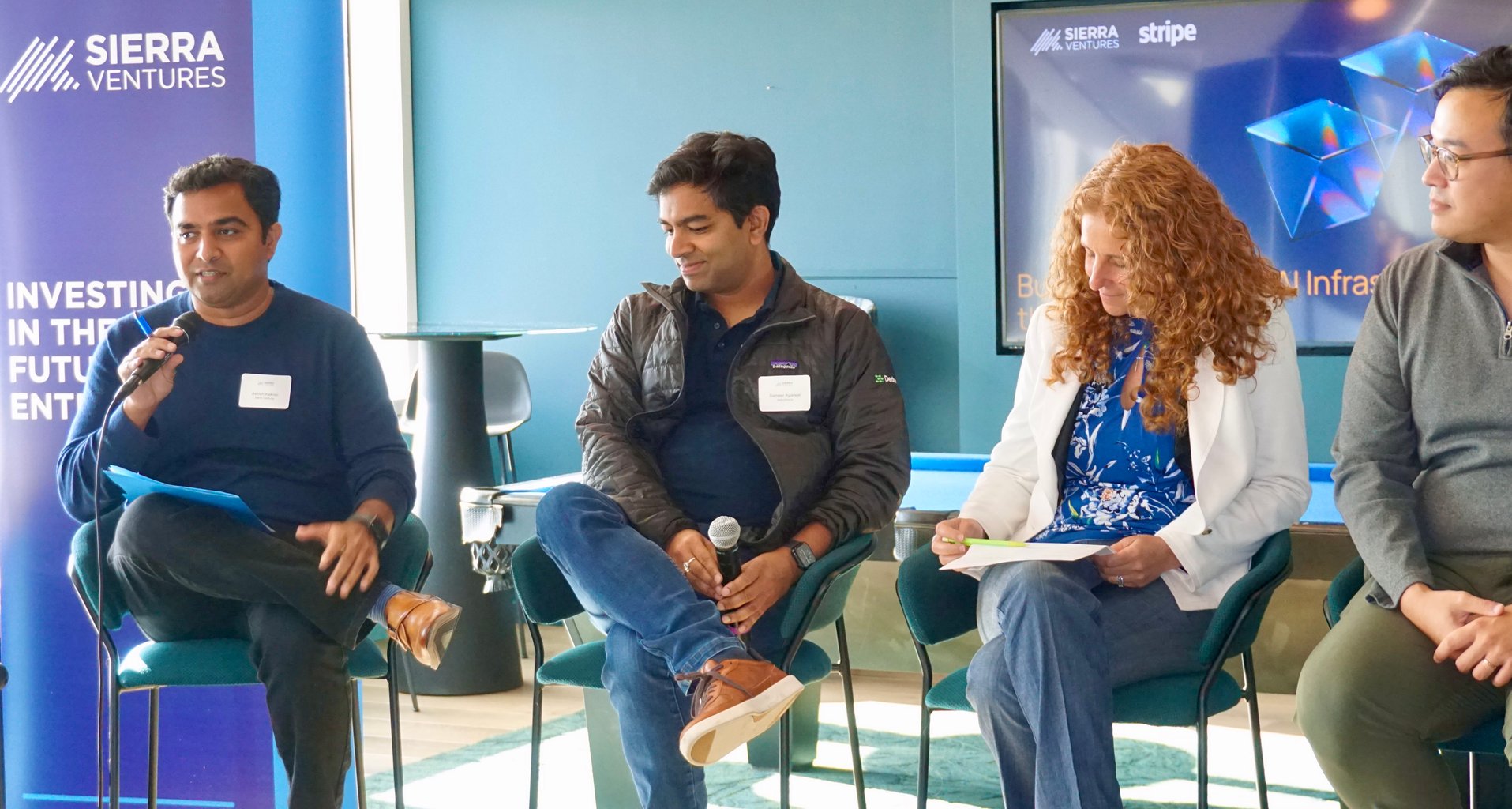Building Agentic AI Infrastructure: What It Really Takes

Enterprise AI is shifting from basic LLM prompts and task-specific copilots to intelligent systems that can reason, plan, and execute across complex workflows. The promise is clear—but delivering it requires deep infrastructure, not just clever prompts.
At Sierra Ventures, we invest early in startups transforming the enterprise. We recently brought together AI founders and technical leaders from our Engineering and Product Leader community for a panel on what it takes to build agentic AI systems that work in production. Here’s what we learned.
When Agents Make Sense—and When They Don’t
Not every task needs an agent. If a user wants to change a spreadsheet cell color or look up a quick fact, it's faster to point, click, or ask a chatbot. But once a workflow becomes multi-step, context-heavy, or spans systems with messy data and edge cases, static tools start to break down.
That’s where agents thrive. Some teams are using them to reverse-engineer undocumented software systems, while others deploy agents to help enterprise users construct complex formulas without learning platform-specific syntax. These are problems where reasoning and iteration matter—exactly what agentic systems are built to do.
The Three Foundations: Planning, Memory, and Action
Reliable agents are more than wrappers on an LLM. They require three key components:
- Planning: The system must interpret user goals and generate an actionable sequence of steps. Static workflows work for predictable tasks, but dynamic plans are essential when goals shift or context changes.
- Memory: Agents need memory to carry state across steps and sessions. Short-term memory enables effective chaining, while long-term memory helps the system learn from past actions and results.
- Action Interfaces: To be useful, agents must interface with external tools—APIs, internal systems, or UIs. This includes parsing results, adapting to failures, and handling security and permissions along the way.
These pieces must work together in real time, with the flexibility to handle ambiguity and course corrections.
Beyond Prototypes: The Infrastructure Behind Production Agents
Early agent frameworks like LangChain helped teams experiment, but production use requires deeper control and customization. Many teams are now building internal stacks that emphasize performance, security, and observability.
- Tool calls are logged, auditable, and often gated behind user confirmation.
- Multiple LLMs may be used in parallel to validate outputs or catch hallucinations.
- Custom evaluation frameworks track real-world accuracy against ground truth data, not just benchmark scores.
In short, enterprise agents need to be inspectable and predictable—not just clever.
Security, Safety, and Guardrails
In enterprise environments, trust is everything. Teams are designing agents with built-in safety checks to prevent unauthorized changes, privacy leaks, or unintended data exposure.
Some best practices include:
- Requiring user approval for any data modification.
- Using privacy filters and sensitivity classifiers on generated output.
- Building “closed” memory systems that don’t leak context between users or sessions unless explicitly designed to.
Security and safety aren’t features—they’re core infrastructure.
Adoption Depends on Fit, Not Flash
The most successful agent deployments aren’t flashy. They focus on real user pain, slide into existing workflows, and quietly remove friction.
One approach: focus on narrow, high-ROI use cases like formula generation or onboarding automation. Start with tools that enhance existing workflows rather than trying to reinvent them.
The goal isn’t to impress users with AI. It’s to help them work better—with transparency, control, and just enough magic to feel useful.
The Agent Era Is Here—But It’s Early
Agentic systems represent a step change in how software operates. They bring intelligence to workflows, enable adaptive planning, and open the door to new forms of automation. However, to deliver on that promise, teams must invest in the fundamentals: planning logic, memory architecture, tool orchestration, safety layers, and user experience.
It’s not enough to plug in a model. You must design for trust, reliability, and seamless integration with the way people already work.
The companies that do this well won’t just deploy AI. They’ll redefine how enterprise software gets built—and how work gets done.
